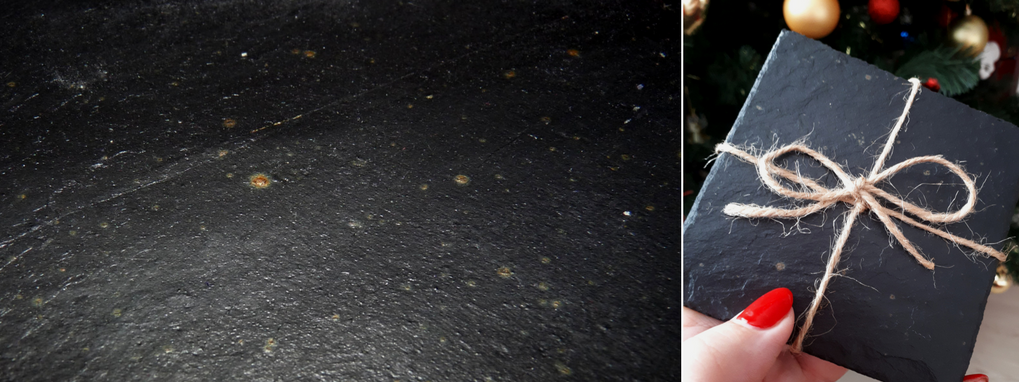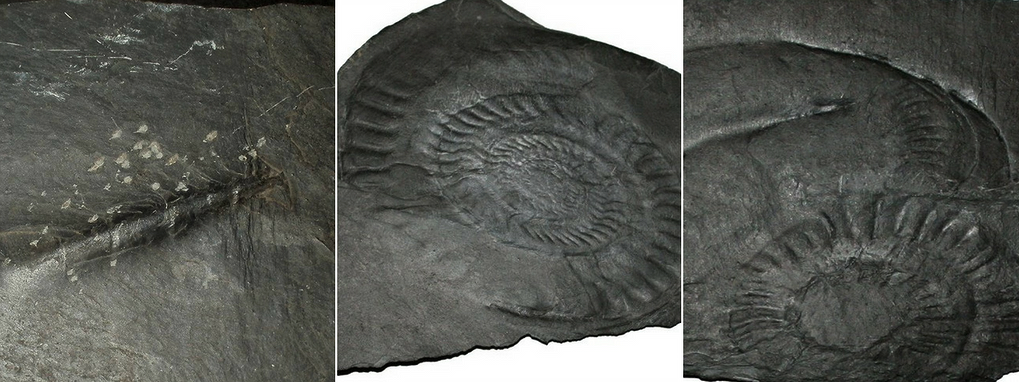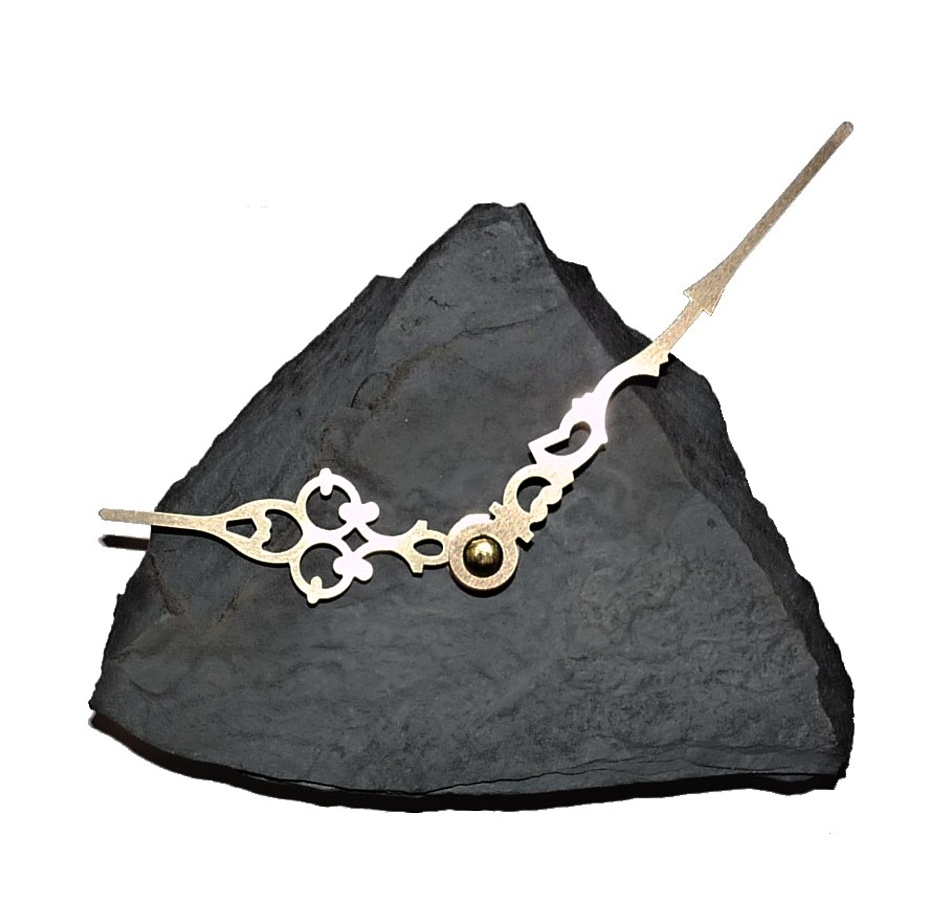Pyrite and fossils in the slate
We all know the proverb: “Not all that glints is gold”, however, do we know the right meaning? Maybe there are more such connections with mentioned proverb, but probably most of us will occur to precious metal. Yes, it looks like that at the first sight. “Golden spots” or cube-like crystals of larger or smaller sizes tempt to that.
The truth is different. Certainly that’s not gold, but pyrite. For its likeness with gold, the pyrite received several nicknames from “gold of fools” to “cat gold”. I do not want to do a lecture on how exactly the pyrite was formed, where it occurs, what is its economic significance, and so on. Just to say, the name of the pyrite originates from Greek and is derived from the word – fire, because after the hit of it often fly sparks. A lot of these and another information may be found on the internet.
Crystals of various minerals from microscopic sizes you can find just looking at the slate plate. Definitely the pyrite is eye-catching, which you can find on some of our products. It’s not a surface defect, rather the opposite. It’s comeback to the period of 300 – 350 million years ago, when we can roughly date its formation.

Pyrite crystals on the slate plate
The second special feature that you can encounter on the slate plates is fossils. What is fossil and how is formed? Briefly said: fossil is the residue, the imprint or the footprint of dead animal, imprint of plant (stem, leaf) preserved in the sediment, thus in our case in slate. In slates mostly occurred ammonites (extinct predatory sea cephalopods) and belemnites (cephalopod with ten shoulders reminding today’s sepia).
For interest, there is need to mention that not so far from Bratislava, in Marianka, was very known location of European importance, where were found unique samples of ammonites and belemnites that are decoration of several paleontological exposures of European museums and institutions. The most of them is in Vienna and Budapest. Several specimen are placed in the deposit in Slovak National Museum in Bratislava. Unfortunately, “such stored” exhibits can’t be seen by the public. Look at least at three of them.

Belemnit and ammonite in the slate
To find preserved fossils of ammonites and belemnites in the slate plates used by us would be a big rarity, but sometimes it’s possible to find imprints of plant leaves and stems, or footprints of small animals that were looking for food in mud marshes, which were later converted to slate.

We use slate with
fossil for some of our products. In particular, one of our products
on which you will find fossil imprint of “route” of worm
Dictyodora liebeana originating from Czech location of Velká Střelná
(the village disappeared in 1945-1950 by the creation of Libavá
military space, Olomouc region) are uniquewall clocks that you will find in our
e-shop BRIDLICA.eu. Maybe, if you will read these lines, they already
have their owner and are already a stylish accessory of his home or
office.
Therefore, based on the above mentioned, if you find fossil imprints on our products, do not consider it as a surface defect or mistake, rather the opposite. It’s natural rarity that gives the product authenticity, originality and uniqueness. They are a unique proof of life on our planet hundreds of million years ago.
The writer: Jozef Kráľ, Spolok Permon Marianka
